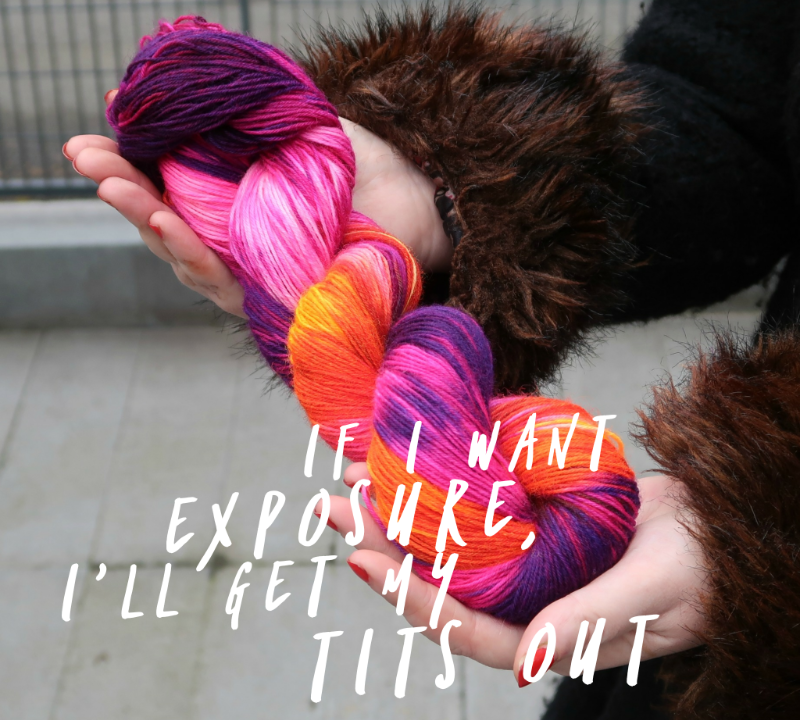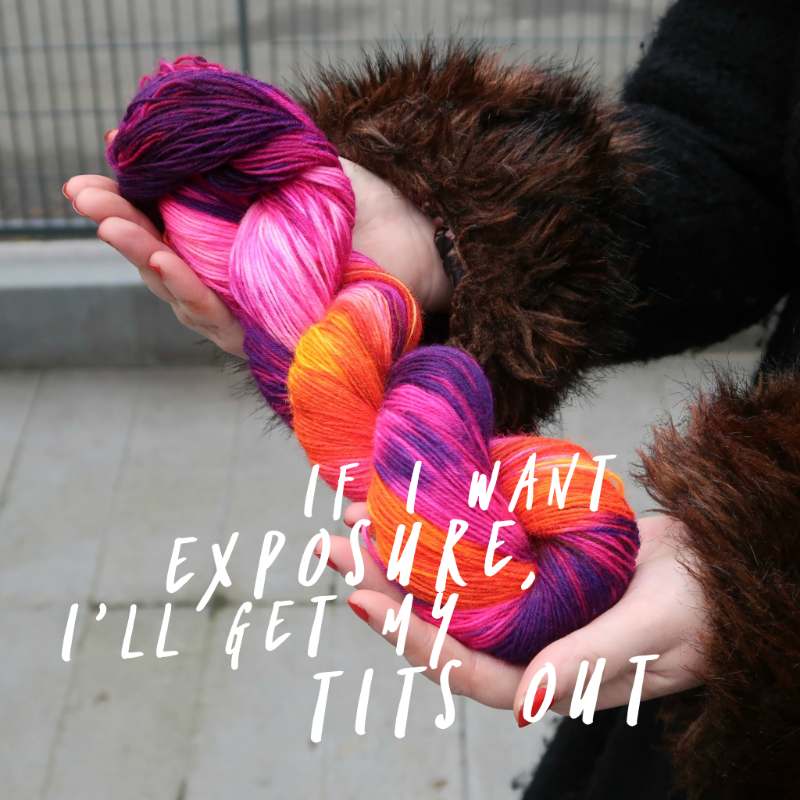

Posted In: Hidden by
Dan Howard,
July 26, 2018

It’s often said that the best defence is offence, and there’s no better example than the unending debacle of the Trump administration that proves this point. Every time he locks up children, makes vile comments about women, or engages in secretive negotiations with Putin, he tells everyone else that they’re lying, stupid, or in the minority to disagree with him, and he carries on as normal.
But how can we take this lesson and attach it to brand-building in a way that is ethical, supportive, and generates long-term love? For that we can turn to the fashion sector, and the news that Burberry has destroyed an estimated £28m in excess stock.
When the cost of living continues to outstrip wage growth, food banks are seeing increased demand, and we’re about to fall off the Brexit cliff-face, the idea of literally burning £28m makes the antics of the K Foundation seem almost laudable. Unsurprisingly, people are outraged at this wanton display of indulgent protectionism.
So where did they go wrong?
They got defensive.
When counterfeiters started trading off the iconic Burberry check, the brand ramped up efforts to control market access. This didn’t make a Burberry bag more desirable, it made the counterfeit more appealing.
Especially when Burberry destroyed a key aspect of their brand identity and shifted the bulk of their manufacturing to China. It only hurts more to learn that GMB calculated that a Burberry shirt only costs £4 to manufacture when made in China, “half as much” as it did in England. They killed their brand to save £4, making their audience angry and attracting a load of bad press in the process.
Regardless, if we somehow skip merrily past the idea of burning £28m of usable clothing and goods as morally defensible, the key issue is that their excuses are simply terrible.
The reasons put forward for the bonfire come down to 3 key arguments:
Let’s break this down.
When the water requirement of an average t-shirt is 2,700 litres, and the leather for a pair of boots requires 14.5 tonnes plus the astronomical carbon footprint of raising livestock, you can see why environmentally conscious consumers are rightly pissed off by this waste of resources.
The amount of energy recovered from incinerating something will never make up for the initial impact of manufacture. It doesn’t unuse the petrol used by freight or clean up the pollution from dyeing plants. Burberry’s attempt at greenwashing their decision is transparent nonsense.
Which leads us to the brand’s second defence – that they are actively minimising excess stock production. You’d be very hard pressed to find a member of the public that thinks £28m is not an ‘excessive’ amount of usable clothes produced. It simply doesn’t add up.
Shit tea & tray bake
So what should they have done? Well, let’s turn to independent yarn dyer Countess Ablaze for a lesson in offensive brand building.
For the non-crafters in the room – Countess Ablaze is a hand-dyer of yarns for knitting, crochet, and other fibre crafts. Where a regular ball of yarn might cost £3-7, Countess Ablaze yarns range as high as £20+ for silk blends and lace-weights. You buy their yarn because it is handmade by an independent business in Manchester, to a superior standard, and in colourways no large-scale producer would dare to create.
Recently, when asked to provide £800 of free stock and an evening of their time to support a charity event in exchange for ‘exposure’, they didn’t take it kindly. Especially because the organisers told them that their audience is “middle aged women who’ll bring their girlfriends” who will enjoy “shit tea and tray bakes [… so] the ROI will be massive.”
The response – go on the offensive but stay classy. Sort of.

They launched two charity colourways aimed squarely at the charity originally attempting to exploit their perceived need for ‘exposure’ to an offensive misreading of their demographic. “Shit Tea and Tray Bake” and “If I Want Exposure, I’ll Get My Tits Out” were launched, with £3 of each skein sold going directly to Women’s Aid.
The empowering message, principled stand against exploitation of independent crafters, and rebellious stance against the stereotype of their fans made both colourways an instant success. Social media and knitting sites went wild with people who are head over heels in love with “If I Want Exposure[…]”
And much like Burberry, the Countess’ success attracted unauthorised emulation. When the limited run sold out, the market demanded more and another dyer started to produce a knock-off “If I Want Exposure” to get in on the action.
This is where Burberry threw its toys out of the pram and became dumbly defensive. Not Countess Ablaze.
Their response? Go on the offensive but stay classy. Sort of.

Countess Ablaze arranged the Tits Out Collective – any yarn or fibre dyer who wanted to was asked to make as much “If I Want Exposure I’ll Get My Tits Out” as they want, brand it as such, and donate a set % of their revenue to charity.
Suddenly, the counterfeit was drowned out of the market and their knock-off became worthless.
The colourway isn’t hard to get hold of, it’s everywhere. What’s more the original counterfeit is now the only version that doesn’t support a charity while every authorised version is now collectible. In the days after launch people actively scoured the internet to find as many versions of the colourway as they could in the hopes of getting a skein or two from their favourite members of the Tits Out Collective.
There are now over 3,000 posts on Instagram from the #TitsOutCollective with 287 authorised versions of “If I Want Exposure…” sold, raising money for a wide range of charities. Countess Ablaze built a brand apart from their own – elevating others’ respect and love for them at the same time. By giving back, they stand to thrive in the longer term as everyone, their direct competitors and their customers, loves them just that little bit for bringing the community together.
Imagine if Burberry were imaginative…
Burberry can’t flood the market and say “hey everyone else can produce Burberry goods and sell them too”, or they’d soon suffer the same fate as Thorntons. But they can certainly do something better than coming across as tone-deaf and ignorant.
Imagine if they’d taken the spirit of Countess Ablaze’s approach and run with it.
Imagine if they’d sent a selection of their unsold stock to fashion schools worldwide.
Imagine if they’d asked the students to do whatever they wanted to them, to take the original Burberry designs and make them their own.
Imagine if they’d then allowed the designers to sell the resulting garments as a limited-edition collaboration.
Imagine if Riccardo Tisci had done a webinar for all the schools, giving them tips and advice on how to work with the garments, and how to promote themselves and their work.
Imagine if all they asked in exchange was the cost price of the garment if it sold.
Imagine if these were actively shared, promoted, and sold on the Burberry website to promote designers.
Imagine if some iconic designers also participated, adding further cache to the event.
Imagine if they’d invited the most promising designers to a launch event, attended by the fashion press.
Imagine if a percentage of the sales was used to set up scholarships for promising young designers.
You’d have exclusive designs created by designers that are currently impossible to buy, from a brand with substantial cache. And better yet, who could be mad at them if it failed? Nobody, they’d just forget it ever happened. The designers would have a load of work in their portfolios, and Burberry would have put their unsold stock to good use.
Defensive marketing doesn’t grow brands, it only slows shrinkage. So next time you have a business decision to make, don’t think ‘what is the safest way forward’, ask yourself ‘how can I make something good come of this’.